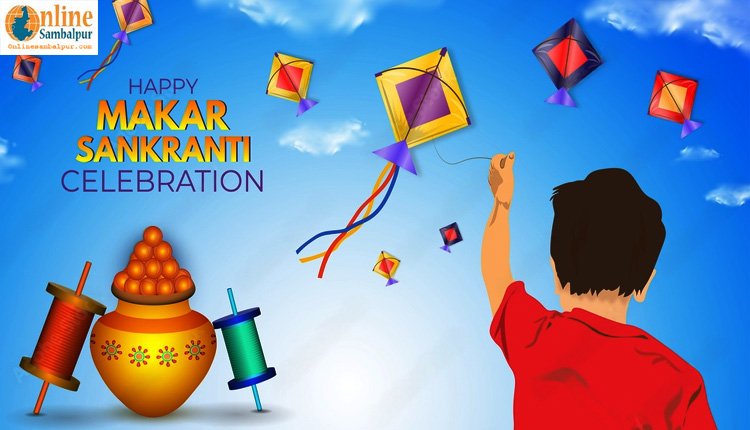Online Sambalpur Team wishes all a Very Happy Makar Sankranti 2024

Makar Sankranti holds a sacred resonance for Hindus, particularly dedicated to the worship of Surya, the sun god. Beyond being a celestial body, the sun symbolizes the cosmic source of energy, light, and life. Ritualistic dips in holy rivers, undertaken by many on this auspicious day, carry symbolic weight, signifying a spiritual cleansing to purify the soul from accumulated sins. In regions steeped in mythology, the festival marks the triumph of virtue over evil, with Lord Vishnu’s legendary defeat of a demon.
Agriculturally, Makar Sankranti marks the threshold of the harvest season, prompting farmers to express gratitude for a fruitful yield and to seek blessings for a prosperous future. The festival becomes a time for communities to come together, sharing the joy of abundance and fostering a sense of collective gratitude. Adding to the festivities, the tradition of flying kites becomes a symbol of dispelling negativity, creating an environment filled with hope and positive energy. As colorful kites dot the sky, they signify not just a playful activity but a collective celebration of newfound warmth and the promise of brighter days.
The Makar Sankranti festival, therefore, becomes a cultural tapestry where religious devotion, agricultural celebration, and community spirit seamlessly intertwine, creating a vibrant mosaic that mirrors the rich diversity of India. The very essence of Makar Sankranti lies in its symbolic meaning, signifying the cyclical rhythm of nature and the collective rejoicing in the renewal of life and prosperity. Now that you’ve understood why Makar Sankranti is celebrated, let’s learn more about the significance of Makar Sankranti, when is Makar Sankranti, its history, and a whole lot more.






